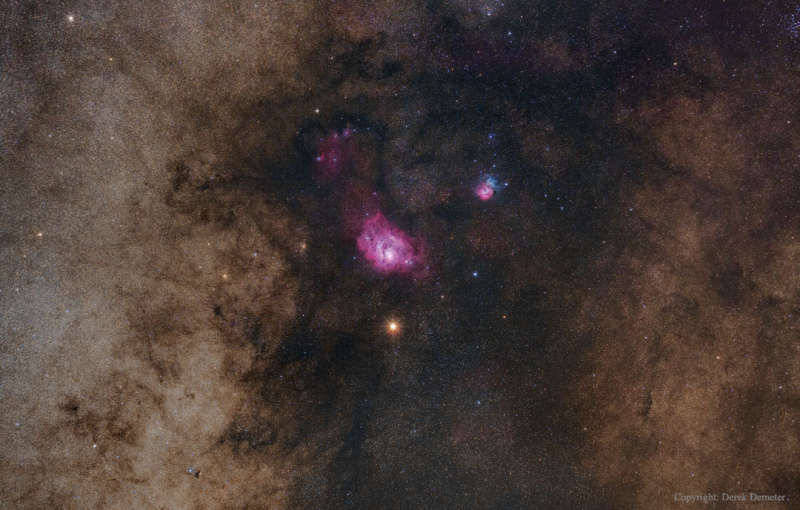
|
Credit & Copyright: Derek Demeter
(Emil Buehler Planetarium)
Explanation:
What creature lurks near the red Lagoon nebula?
Mars.
This gorgeous
color deep-sky photograph has captured the red planet passing below two
notable nebulae -- cataloged by the 18th century cosmic registrar
Charles
Messier as M8 and M20.
M20 (upper right of center),
the Trifid Nebula, presents a striking contrast in
red/blue colors and dark dust lanes.
Just below
and to the left is the expansive, alluring red glow of M8,
the Lagoon Nebula.
Both nebulae are a few thousand
light-years distant.
By comparison,
temporarily situated below them both,
is the dominant "local" celestial beacon
Mars.
Taken late last month while near its closest approach to the Earth,
the red planet
was only a few light-minutes away.
Now Available:
APOD 2015 Wall Calendars
|
January February March April May June July August September October November December |
| ||||||||||||||||||||||||||||||||||||||||||||||||
NASA Web Site Statements, Warnings, and Disclaimers
NASA Official: Jay Norris. Specific rights apply.
A service of: LHEA at NASA / GSFC
& Michigan Tech. U.
Based on Astronomy Picture
Of the Day
Publications with keywords: Mars - Lagoon Nebula
Publications with words: Mars - Lagoon Nebula
See also:
- APOD: 2025 September 28 Á Leopard Spots on Martian Rocks
- APOD: 2025 July 15 Á Collapse in Hebes Chasma on Mars
- APOD: 2025 July 6 Á The Spiral North Pole of Mars
- APOD: 2025 June 29 Á Dark Sand Cascades on Mars
- APOD: 2025 June 22 Á A Berry Bowl of Martian Spherules
- APOD: 2025 June 15 Á Two Worlds One Sun
- Perseverance Selfie with Ingenuity
